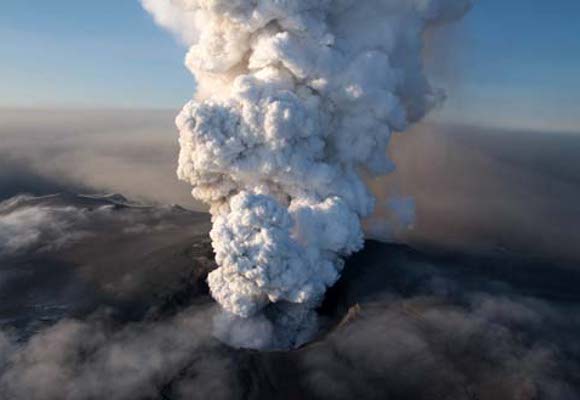The ash plume from the large and still ongoing subglacial eruption of Grimsvötn volcano has caused heavy ash fall and shredded much of the country in darkness over the weekend. At the moment, most flights to and from Iceland are cancelled.
At the moment, the plume height seems to have decreased from initially 17-18 km (55,000 ft) to 8-12 km (20,-35,000 ft) and is drifting and spreading W and NW, where it is interfering with transatlantic flight routes.
European airspace has so far not been affected and experts think that a repeat of a major disruption of air travel as during last year’s Eyafjallajökull eruption is unlikely.
However, officials say the eruption is unlikely to have the same impact as Eyjafjallajokul, despite warnings that ash could reach northern Scotland by Tuesday and parts of Britain, France and Spain by Thursday.
The Grimsvotn volcano, which lies under the uninhabited Vatnajokull glacier about 120 miles reykjavik, began erupting on Saturday for the first time since 2004. University of Iceland geophysicist Magnus Tumi Gudmundsson said the new eruption was 10 times as powerful as the one in 2004, which lasted for several days and briefly disrupted international flights.
He told broadcaster RUV that the eruption was Grimsvotn’s largest for 100 years.
“The ash in Eyjafjallajokull was persistent or unremitting and fine-grained,” Einarsson said. “The ash in Grimsvotn is more coarse and not as likely to cause danger as it falls to the ground faster and doesn’t stay as long in the air as in the Eyjafjallajokull eruption.”
